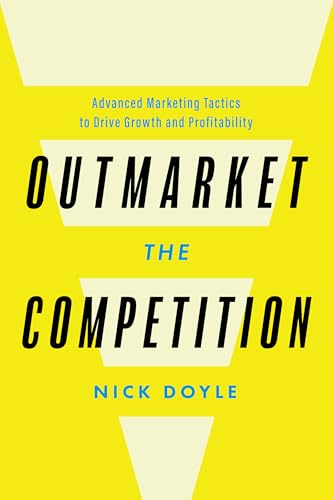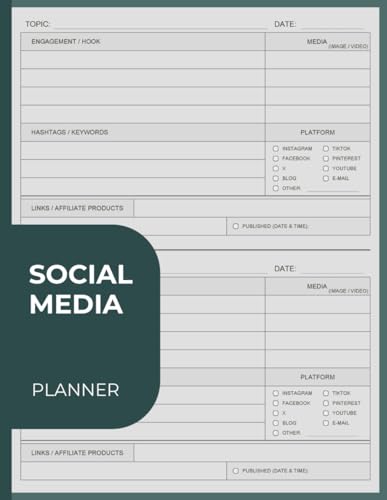Being a business owner or marketer in the US means facing tough competition online. It feels like an endless race, doesn’t it? You’re always trying to get people’s attention, bring them to your site, keep them interested, and turn them into dedicated customers.
I understand the struggle well. The restless nights, endless planning, searching for the strategy that puts your business on top. But there’s good news. It’s possible to find your path to success in this changing digital world. And see real outcomes.
Enter the realm of digital marketing. It’s where you connect deeply with people, make your brand known, and lift your business higher. This guide is all about the must-know strategies for US businesses to flourish online.
We’ll look at making your website search-engine friendly, using content marketing, social media, and pay-per-click ads to draw in more visitors. So, make yourself a coffee, get comfy, and get ready. We’re about to change how you see marketing.
In this digital age, having a strong online presence is crucial for success. Now is the time to boost your business with digital marketing.

Understanding the Digital Landscape
Businesses today must focus on building a strong online presence. With more people using digital channels, it’s essential to meet them where they are. By knowing the ins and outs of the digital world, companies can use the best platforms to connect with customers and grow.
Channels and Platforms
The digital realm is full of ways to reach your audience. There are websites, social media, search engines, and email marketing. Each one offers a special chance to interact with potential customers and make your brand more visible. By choosing these channels wisely, businesses can build a compelling online presence that speaks to their audience.
Adapt to Changing Consumer Behavior
What customers want and how they behave online keeps changing. This is because of new technologies, cultural shifts, and changing market trends. To prosper online, businesses need to keep up. They should understand their audience’s digital habits and adjust their plans to fulfill customer expectations and offer valuable experiences.
Stay Up-to-Date with Latest Trends
The world of digital marketing never stands still. For a business to stay ahead, it must be aware of the latest tech and trends. This means trying out new platforms, exploring innovative marketing methods, and always being ready for what’s next. Staying current gives businesses an edge, helping them maintain a strong and meaningful online presence.
| Benefits of Understanding the Digital Landscape | Actions for Businesses |
|---|---|
| Enhanced online presence | Develop a comprehensive digital marketing strategy |
| Increased brand visibility | Stay informed about emerging platforms and channels |
| Improved customer engagement | Monitor consumer behavior and adapt strategies accordingly |
| Ability to leverage new marketing trends | Invest in ongoing training and education for marketing teams |
Knowing the digital scene is key for businesses wanting a strong online presence. It’s vital to adjust as customer needs change and to keep up with the latest trends. This way, companies can make the most of the various platforms and channels. They can engage better with their audience and drive success.
Crafting an Effective Digital Marketing Strategy
Today, businesses need a strong digital marketing strategy to stand out online. This plan involves using different tactics to reach goals. Let’s dive into the key parts of a successful strategy and give tips for making a plan that fits your goals.
Defining SMART Goals
Setting SMART goals is the first step in digital marketing. SMART means Specific, Measurable, Achievable, Relevant, and Time-bound. These goals act like a map for your marketing work. With clear targets, like boosting site visits by 20% or getting 50 new leads every month, you can see if you’re succeeding.
Identifying Target Audiences
Knowing who you’re talking to is vital for a winning digital strategy. Doing detailed market research lets you understand who your ideal customers are. You can then craft messages, pick digital channels, and create content that speaks to them.
Selecting the Right Digital Channels
There are many digital platforms you can use, like search engines and social media. Picking the right ones is key to getting a good return on your investment. SEO can improve your visibility in searches, and social media ads can increase your audience. Using the best channels, businesses can truly connect with their key customers.
Creating Compelling Content
Great content is at the center of successful digital marketing. Whether it’s blog posts, videos, or infographics, your content must interest your target market. Being consistent with quality content can make you a leader in your field. It also helps build trust with your audience.
Measuring and Analyzing Results
It’s crucial to check how well your marketing is doing. Look at things like web traffic, conversion rates, and social media activity. This data tells you what’s working and what’s not. With this knowledge, you can tweak your strategy to get better results over time.
A strong digital marketing strategy uses online tools to boost business success. By keeping up with digital trends and adjusting your plan, you can stay competitive and grow.
| Key Components of an Effective Digital Marketing Strategy |
|---|
| Defining SMART goals |
| Identifying target audiences |
| Selecting the right digital channels |
| Creating compelling content |
| Measuring and analyzing results |
Optimizing Website for Search Engines
Today, making your business website easy to find online is key. Search engine optimization, or SEO, uses many techniques to get your site to show up higher in search results. When people look for keywords related to your business, SEO helps them find you.
First off, finding the right keywords is super important. You need to know what words people type when looking for your products or services. Then, mix those keywords into your site’s content. This makes sure search engines spot your site when those keywords are searched.
On-page optimization also boosts your site’s ranking. It involves tweaking your site’s title tags, meta descriptions, and headers with the right keywords. Plus, having unique, helpful content keeps visitors interested and on your site longer.
Don’t forget about technical SEO. This includes making your site load fast, work well on phones, having a clear layout, and using schema markup. These changes help search engines understand your site better and improve your rankings.
User experience (UX) is also huge for SEO. If your site is easy and fun to use, it’s more likely to rank higher. Work on making pages load fast, navigation easy, and ensure it looks great on mobile phones. A good UX keeps people on your site and might lead to more sales.
To wrap up, making your website search engine friendly is a must for online success. Start with detailed keyword research, focus on on-page optimization, take care of the technical stuff, and make your site a joy to use. By doing these things, you’ll climb the ranks in search results and meet your marketing objectives.
Harnessing the Power of Content Marketing
Today, content marketing is key for business success in the digital world. By sharing helpful and relevant content, companies can draw in, connect with, and keep their audience interested.
Quality is more important than how much content is made. By sharing top-notch and useful information, companies can become leaders in their field. This helps build trust with people they want to reach. Content can be anything from blog posts and articles to videos and infographics that meet the audience’s needs.
After making content, it’s time to spread the word. Companies use social media, emails, and SEO to reach more people. By promoting their content, companies get more website visitors.
Telling stories is a great way for marketers to connect with people. Good stories make people feel something and remember the business. This can be stories of success, customer feedback, or personal experiences that inspire and encourage action.
Benefits of Content Marketing
Content marketing can bring many good things to businesses. Here’s what they can look forward to:
- Increased brand awareness and visibility
- Enhanced search engine rankings
- Improved customer engagement and loyalty
- Generated leads and conversions
- Established thought leadership and authority
| Key Components of an Effective Content Marketing Strategy |
|---|
| 1. Thorough audience research and understanding |
| 2. Clear and specific content goals |
| 3. Consistent content creation and publishing schedule |
| 4. Strategic content promotion across multiple channels |
| 5. Compelling storytelling and emotional connection |
| 6. Regular analysis and optimization of content performance |
To use content marketing well, businesses must focus on what works best for them. It’s essential to keep content relevant and engaging for the target audience. This means adjusting strategies to fit their industry and goals.
Leveraging Social Media Marketing
Social media has changed how businesses reach their audience. They use these platforms to promote goods or services. This helps grow their online presence and drive traffic to their site.
Through engaging their followers, they can boost conversions. It’s a key strategy in today’s digital world.
Creating a Social Media let Strategy
Setting clear goals is the first step to a strong social media plan. Knowing your audience is crucial too. This helps create content that speaks to them directly.
It’s also important to pick the right platforms for your audience. Each one has unique benefits. Focusing on where your audience spends time can increase your return on investment.
Engaging with Followers
Engagement is crucial in social media marketing. Interacting with comments, messages, and shares builds a dedicated community. Addressing customer feedback and inquiries helps build trust.
Starting conversations and promoting user content boosts engagement. It makes followers feel connected to the brand. This approach enhances loyalty and satisfaction.
Running Targeted Advertising Campaigns
Social media’s targeted ads help reach the right audience. You can select users based on demographics or interests. This increases the likelihood of conversions.
Retargeting campaigns focus on users who showed interest before. It’s a smart way to remind them of what caught their eye. This strategy can increase sales.
Tracking Social Media Metrics
Understanding your social media performance is key. Tracking metrics like reach and engagement helps know what works. It offers insights into your audience’s preferences.
Monitoring analytics helps improve campaigns. It’s about learning from data to better connect with your audience. Refining strategies based on this data can lead to greater success.
| Social Media Metrics to Track | Definition |
|---|---|
| Reach | The number of unique users who have seen your social media content. |
| Engagement | The number of likes, comments, shares, and other interactions with your social media content. |
| Click-through Rates (CTR) | The percentage of users who clicked on a link in your social media content. |
| Conversions | The number of users who took a desired action after interacting with your social media content, such as making a purchase or signing up for a newsletter. |
Regularly checking these metrics helps make informed decisions. By analyzing them, businesses can fine-tune their strategies for better results.
Nurturing Leads with Email Marketing
Email marketing is a key tool for businesses to nurture leads and increase sales today. It sends targeted, personal messages right to potential customers’ inboxes. This makes it very powerful for all kinds of businesses.
Building a good email list is a crucial first step. You can grow your list by using opt-in forms, offering content that’s behind a gate, and promoting on social media. It’s vital to be clear and get clear permission from your subscribers, following the rules of email marketing.
Having a big email list means you need great content. Your emails should be informative, engaging, and matter to the reader. Adding personal touches, like the reader’s name or past browsing data, can make the emails feel more special and boost engagement.
Key Takeaway: Focus on delivering valuable, relevant content to your subscribers. This builds trust and can lead to more sales.
It’s also important to keep an eye on how your emails perform. Watch metrics like how many people open your emails, how many click on links, and how many actually do what you’re asking them to. This info helps you tweak your emails to work better.
Key Takeaway: Always review your email campaign’s performance. It helps you find ways to get better results.
Examples of Email Marketing Metrics:
| Metric | Definition |
|---|---|
| Open Rate | The percentage of recipients who opened the email. |
| Click-Through Rate (CTR) | The percentage of recipients who clicked on links within the email. |
| Conversion Rate | The percentage of recipients who completed a desired action, such as making a purchase or filling out a form. |
| Bounce Rate | The percentage of emails that were not delivered to the recipient’s inbox. |
With smart email marketing, businesses can build lasting connections and boost sales. When done right, email campaigns can yield a big return on investment. They’re a crucial part of any digital marketing plan.
Driving Results with Pay-Per-Click Advertising
Pay-per-click (PPC) advertising is a great way for businesses to be seen more and get more website visitors. It involves bidding on keywords and making your ad copy the best it can be. This helps businesses get more bang for their buck and reach their marketing goals. Let’s look at the important parts of a successful PPC campaign and how to make PPC advertising work for you.
Keyword Bidding Strategies
Keyword bidding is at the heart of PPC advertising. It’s key to pick the right keywords and set the right bid amounts. Do your homework to find what keywords your audience is searching for. Using both high-value and long-tail keywords makes your ads more visible. This brings more qualified people to your site.
Ad Targeting Options
PPC platforms have different ways to target your ads to the perfect audience. You can target ads based on age, gender, or where people live. Also, look into targeting based on interests or past behaviors that match what you’re selling. By narrowing down your audience, your ads will be more relevant. This will make them perform better.
Ad Copy Optimization
The success of your PPC ads largely depends on your ad copy. Create ad copy that’s both engaging and clear. Highlight what makes your offer special. Always include a strong call-to-action to get people to click on your ads and do what you want on your site. Try out different ad copy versions to see which one your audience likes best.
Measuring ROI
Knowing the ROI of your PPC campaigns is vital. It tells you if your ads are working well and how to use your budget better. Use the PPC platform’s tools to keep an eye on important metrics like click-through rate, conversion rate, and cost per acquisition. Keeping track of these metrics helps you make decisions based on data. This can lead to better results.
| Key Metrics to Measure PPC Success | Description |
|---|---|
| Click-Through Rate (CTR) | Measures the percentage of users who click on your ad after viewing it. |
| Conversion Rate | Calculates the percentage of users who complete a desired action on your website, such as making a purchase or filling out a form. |
| Cost Per Acquisition (CPa) | Determines the average cost incurred to acquire a new customer or lead through your PPC campaigns. |
| Return on Investment (ROI) | Measures the profitability of your PPC campaigns by comparing the revenue generated to the amount spent on advertising. |
Using pay-per-click advertising, businesses can attract more targeted visitors, be more visible, and hit their marketing targets. By smart keyword bidding, targeting ads accurately, creating great ad copy, and tracking ROI, businesses can make their PPC campaigns even better. Start using these strategies now and see how much PPC advertising can help your business.
Measuring Success and Analytics
Data analysis is key to understanding if digital marketing works. By tracking the right indicators, companies can know what changes to make for better outcomes. We’ll look at how analytics can help make smart decisions.
Setting Up Analytics Tools
Setting up the right analytics tools is the first step. Tools like Google Analytics help see how your site is doing and what users do on it. With these tools, you can track what matters for your goals and get accurate data.
Tracking Key Performance Indicators (KPIs)
Knowing which KPIs to watch is important for your campaign’s success. These could be website visits, how often people buy something, how long they stay, or if they leave quickly. Keeping an eye on these helps see what’s working or needs change.
Using Data to Make Data-Driven Decisions
Making choices based on data analysis can lead to better strategies. When businesses understand their data, they can see trends and patterns. This information helps improve marketing and use resources wisely.
Success in digital marketing comes from analyzing and acting on data. A data-driven approach helps in refining strategies, making smarter decisions, and achieving more success.
Conclusion
Digital marketing is a must for US businesses today. It is crucial in a world where people go online to find what they need. If you want to compete, you need to embrace digital strategies.
Building a solid digital marketing plan is key. Start with a great website, interesting content, and strong social media. Using different digital channels lets you reach and connect with the people you want to attract.
It’s time for both new and experienced business owners to use digital marketing. Apply what we’ve discussed to boost your online presence. Connecting with your customers online will help you stand out from your competitors. Remember, always be ready to change and improve your approach to keep growing. Stay up-to-date, check your results, and adjust your plan as needed for success.














![NEEWER 55W 18"/45cm Ring Light Kit [New Version], 5600K Dimmable ...](https://m.media-amazon.com/images/I/414QLqvZWLL._AC_.jpg)








